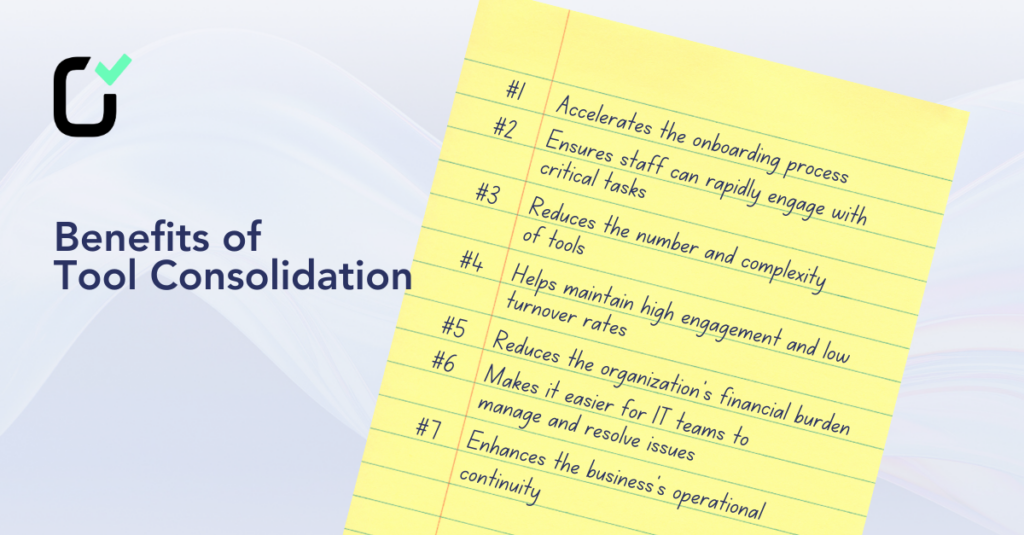Sorting the SOC Drawer: How to Tidy Up Cybersecurity Tools

When managing a Security Operations Center (SOC), the challenges can be as mismatched and tangled as a sock drawer after laundry day. SOCs grapple with an overwhelming influx of alerts from an array of security tools, many as similar as they are functionally redundant—much like socks of slightly different shades. This clutter makes it hard to pull out what’s needed quickly and adds to the cognitive load, making it difficult for IT staff to spot the real threats among the false alarms.
As any good spring cleaner knows, decluttering is the first step to efficiency. In cybersecurity, this means streamlining tools to reduce redundancy, like pairing socks before they go into the drawer. By consolidating overlapping tools and integrating functionalities, organizations can significantly reduce the noise that obscures critical security insights. This makes the SOC environment more manageable and enhances the team’s ability to respond swiftly and accurately to genuine threats, ensuring that no critical alert is lost in the shuffle.
Redundancy Overwhelms Security Teams
Security teams are inundated with alerts from an ever-expanding arsenal of tools. These tools, designed to safeguard organizations from digital threats, often perform overlapping functions. This redundancy not only muddles the clarity of threat detection but also significantly dampens the operational efficiency of these teams.
The scenario becomes particularly chaotic with the rapid integration of new technologies. Organizations, in their bid to stay ahead of emerging threats or adapt to new technological shifts, frequently deploy additional security solutions without thoroughly assessing existing capabilities. This approach leads to a cluttered, noisy environment that burdens the staff excessively. The resultant noise strains resources and complicates the threat identification and response process, creating a cycle of inefficiency that can hinder the organization’s overall security posture.
Cognitive Load and Efficiency Decline
Managing a diverse array of tools, while integral to a comprehensive security strategy, can precipitate cognitive overload. The mental burden of juggling multiple interfaces, rules, and alerts complicates the staff’s ability to maintain a clear and cohesive understanding of the security environment. This cognitive strain clouds decision-making and impedes effective management of security operations.
The complexity introduced by this multitude of tools often leads to a significant diversion of attention. Instead of focusing on strategic tasks that could preempt security incidents or innovate protective measures, IT personnel are mired in the minutiae of routine tool management. This shift in focus diminishes the team’s operational responsiveness and stunts the organization’s ability to dynamically adapt to new threats.
Compounded Challenges in a Skilled Labor Market
The relentless pace and pressure of managing security operations are not without their human costs, particularly in the form of alert fatigue. This condition strains the cognitive resources of SOC analysts and leads to burnout—a primary driver of turnover within security teams. The constant barrage of alerts, many of which turn out to be false positives, can dull an analyst’s vigilance and diminish their job satisfaction, ultimately pushing them towards seeking relief outside the organization.
This turnover aggravates the challenges in a cybersecurity labor market already grappling with a significant skills gap. The demand for skilled professionals who can navigate a wide array of complex security tools far exceeds the available talent pool. As seasoned analysts leave, organizations face the daunting task of replacing them—an endeavor made difficult not only by a competitive hiring environment but also by the specific demands of the role. New hires often arrive with only a partial grasp of the diverse technologies they will need to manage, necessitating extensive training and onboarding processes. This prolongs the time before a new analyst becomes fully effective and imposes additional strain on the remaining team members, who must bridge the gap in the interim.
The cycle of alert fatigue leading to burnout and turnover becomes a significant operational hurdle, undermining the efficiency and effectiveness of the SOC. As analysts burn out and churn out, they leave gaps to be filled by those left behind, only increasing their stress and leading to greater burnout issues for the organization. This cycle can rapidly spin out of control, gutting SOCs and leaving them unable to efficiently operate, with insufficient staff to quickly investigate alerts.
Streamlining Tools to Enhance Clarity and Response
Clarity and swift response are paramount in a SOC. However, the effectiveness of security operations can often be hindered by the clutter of overlapping tools that flood the IT environment. To combat this, organizations are increasingly turning to consolidating tools and integrating functionalities. This strategic streamlining reduces the redundant layers of technology that obscure vital security insights and decelerate response mechanisms.
When security tools are streamlined, the immediate benefit is a cleaner, more navigable operational landscape. This simplification drastically improves visibility, allowing security teams to see through the noise and focus on what truly matters: detecting and mitigating threats. Enhanced visibility not only aids in quicker identification of potential security breaches but also facilitates a more effective response. With a consolidated toolset, the once scattered functionalities across multiple platforms can now be accessed swiftly and efficiently, enabling security analysts to react more promptly to threats.
Moreover, streamlined tools bring about coherence, which is often lacking in overly complex systems. This coherence fosters better communication and collaboration within security teams and organizational departments, further amplifying operational responsiveness.
Consolidated Security Stack Benefits
By reducing the complexity and number of security tools an organization uses, new team members can achieve operational proficiency much quicker. This streamlined approach not only accelerates the onboarding process but also ensures that staff can more rapidly engage with the critical tasks at hand, effectively boosting the overall productivity and agility of the security team. Reducing the number and complexity of tools also helps create a more focused and less overwhelming learning environment for the staff, which is essential for maintaining high engagement and low turnover rates.
A consolidated security stack significantly reduces the organization’s financial burden. Fewer tools mean lower licensing and maintenance costs, which can lead to substantial savings over time. Additionally, a simplified tool environment streamlines the support structure, making it easier for IT teams to manage and resolve issues. This leads to faster resolution times and minimizes system downtime, enhancing the business’s operational continuity.

Data Detection and Response as a Strategic Solution
Adopting Data Detection and Response (DDR) technologies represents a strategic leap forward in streamlining operations. DDR helps minimize the noise within the security environment by focusing exclusively on genuine threats, reducing false positives, and integrating various security functions into a more effective data security tool. This targeted approach reduces the volume of unnecessary alerts and enhances the overall operational efficiency of SOCs. By providing a unified view of the security landscape, DDR enables more coordinated and rapid responses to incidents, allowing security teams to act swiftly and decisively.
With real-time threat management, DDR enables SOCs to address threats as they occur, ensuring that response times are as immediate as the threats are dynamic. DDR’s proactive capabilities help SOCs move away from traditional and often cumbersome practices like quarantining and sandboxing, adopting more efficient methods that prevent threats before they infiltrate the network.
Learn how pairing Votiro’s advanced DDR solution with your data security needs can declutter your cybersecurity environment and boost operational efficiency. Sign up for a one-on-one demo today, or try our advanced data security platform free for 30 days and experience firsthand how our technology can help organize your IT strategy and safeguard your digital assets from malware threats and data privacy risks.
News you can use
Stay up-to-date on the latest industry news and get all the insights you need to navigate the cybersecurity world like a pro. It's as easy as using that form to the right. No catch. Just click, fill, subscribe, and sit back as the information comes to you.
Sign-up Here!
Subscribe to our newsletter for real-time insights about the cybersecurity industry.



